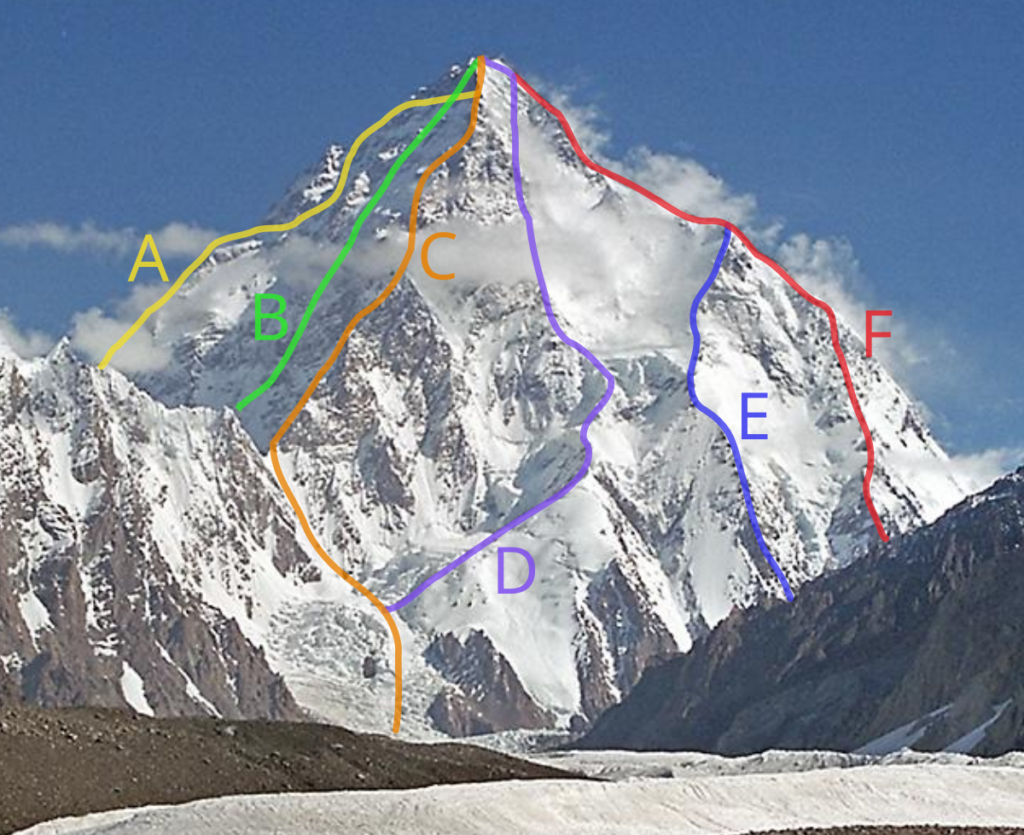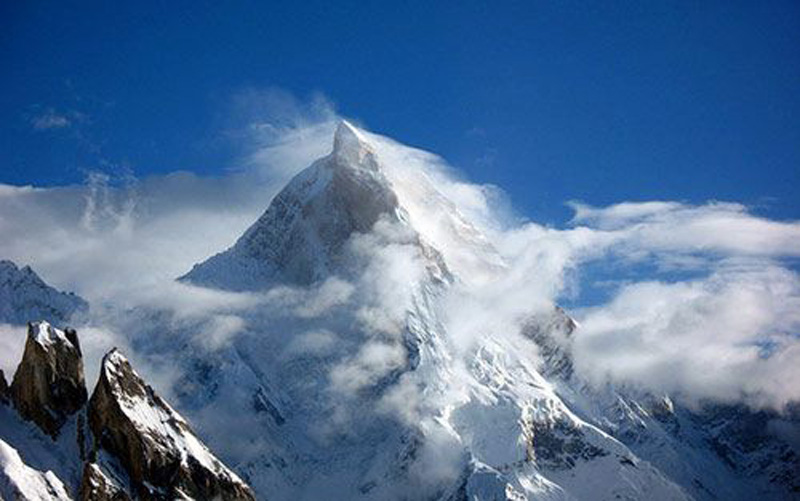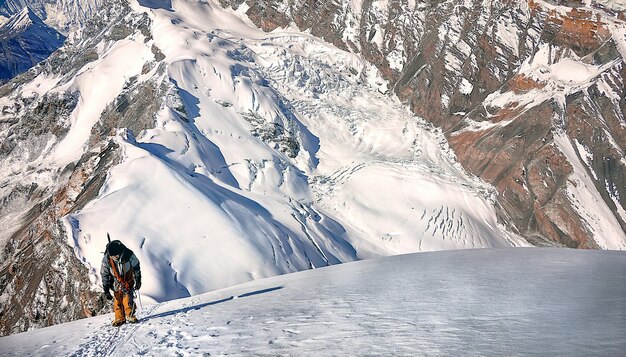K2 vs Everest: The Ultimate Challenge – Which Mountain is Harder to Conquer?
K2 vs Everest, Climbing Difficulty
K2 vs Everest both K2 and Mount Everest are iconic peaks, but K2 is often considered harder due to its steep, technical routes like the Abruzzi Spur, requiring advanced ice and rock climbing skills. Everest’s standard South Col route is more of a high-altitude trek with fixed ropes, making it less technically demanding for climbers with support.
Weather Conditions
K2 vs Everest, K2’s weather is notoriously unpredictable, with sudden storms and high winds posing significant risks. Everest, while also harsh, benefits from better weather forecasting due to its popularity, which can help climbers plan safer ascents.
Risks and Statistics
K2 vs Everest, K2’s higher death rate, estimated at 10-15% per attempt, reflects its dangers, including avalanches and falls, compared to Everest’s 1-3%. Summit success rates are lower for K2 at 20-30%, while Everest sees 50-60%, partly due to its commercialization.

Commercialization vs. Elite Challenge
K2 vs Everest, Everest has become highly commercialized, with numerous expedition companies offering guided tours, making it more accessible. K2, due to its technical difficulty and location, remains less commercialized, attracting only elite mountaineers.
Detailed Analysis and Insights
This section provides a comprehensive exploration of the comparison between K2 and Mount Everest in terms of climbing difficulty, focusing on the aspects outlined in the query. The analysis is structured to mimic a professional article, ensuring all details from the initial inquiry are covered, with additional context for a thorough understanding.
Introduction to K2 and Everest
K2 vs Everest, when it comes to the world’s most formidable mountains, K2 and Mount Everest stand out as two of the most challenging peaks to conquer. Both are part of the Himalayas and are known for their extreme conditions and high altitudes.
However, the question of “K2 vs Everest: Which Mountain is Harder to Climb?” often arises among mountaineers and enthusiasts. To answer this, we need to delve into various aspects that define the difficulty of climbing these mountains, including climbing difficulty, weather conditions, technical challenges, and risks.
Additionally, we will explore why Everest is more commercialized while K2 remains a challenge for elite mountaineers, and include statistics on summit success and death rates.
Height and Altitude
K2 vs Everest, first, let’s consider their heights. Mount Everest is the tallest mountain in the world at 8,848 meters, while K2 is the second tallest at 8,611 meters. The difference in height might suggest that Everest is harder due to lower oxygen levels at higher altitudes, which can exacerbate altitude sickness.
However, K2’s base camp is at a lower altitude (approximately 4,920 meters) compared to Everest’s base camp on the south side (around 5,364 meters). This means that climbers on K2 have to ascend a greater vertical distance from base camp to the summit, which can be more strenuous and affect acclimatization differently.
The lower oxygen levels at Everest’s higher altitude still pose significant challenges, but the initial approach on K2 can be more demanding in terms of vertical gain.

Climbing Routes and Technical Challenges
K2 vs Everest, the standard climbing route on Mount Everest is via the South Col on the Nepalese side, which is well-established and relatively straightforward for a mountain of its stature. This route involves navigating the Khumbu Icefall, a dangerous section with potential ice collapses, but it is supported by fixed ropes, ladders, and often Sherpa assistance.
The route is considered more of a high-altitude trek with some scrambling, especially through the Hillary Step, which, while challenging, is not extremely technical. In contrast, K2’s standard route is the Abruzzi Spur, which is technically more demanding. It involves steep ice and rock climbing, requiring advanced skills in ice climbing, mixed climbing, and navigating exposed ridges. The narrow and exposed summit ridge on K2 adds to the difficulty, making it a mountain that demands not just endurance but also significant technical expertise.
This difference in technical challenge is a key factor in why K2 is often seen as harder. For instance, while Everest’s route can be managed with guided tours and fixed ropes, K2 requires climbers to have a higher level of mountaineering experience, often limiting it to elite mountaineers. This is evident in discussions on mountaineering forums and articles, such as Mount Everest, which highlight the accessibility of Everest’s routes compared to K2’s more demanding ascents.
Weather Conditions
K2 vs Everest, both mountains are notorious for their harsh weather conditions, including extreme cold, strong winds, and the risk of avalanches. However, K2 is particularly known for its unpredictable weather patterns. Sudden storms can catch climbers off guard, and the mountain is often shrouded in high winds, making the ascent more dangerous.
Everest, while also facing severe weather, benefits from better weather forecasting due to its popularity and the presence of more meteorological data. This allows climbers on Everest to plan their ascents during relatively stable weather windows, such as the pre-monsoon and post-monsoon seasons.
For K2, the weather can be less predictable, with reports of climbers facing unexpected storms, as noted in K2, which discusses the mountain’s reputation for sudden weather changes.

Risks and Safety
K2 vs Everest, statistics play a crucial role in assessing the difficulty of these mountains. The death rate on K2 is significantly higher than on Everest, reflecting its dangers, including avalanches, rockfalls, and falls due to its steep terrain. As of 2022, approximately 400 climbers have summited K2, with about 90 deaths recorded, according to K2 climbing history.
For Everest, over 5,000 climbers have reached the summit, with around 300 deaths, as per Climbing Mount Everest. Calculating the exact death rate is complex due to varying definitions of “attempt,” as many climbers turn back without reaching the summit or dying. However, a common measure is the ratio of deaths to successful summits.
For K2, this ratio is about 1 death for every 4.4 successful summits (400 summits / 90 deaths ≈ 4.44). For Everest, it’s about 1 death for every 16.67 successful summits (5,000 summits / 300 deaths ≈ 16.67), indicating K2’s higher risk.
More broadly, the mortality rate per climber attempting the climb from base camp to summit is estimated at around 10-15% for K2 and 1-3% for Everest, based on various sources like Death rates on Mount Everest and Death rates on K2. This higher risk on K2 is partly due to its technical difficulty and less predictable weather, making it a more dangerous proposition.
Summit success rates also differ significantly. For Everest, the success rate is around 50-60%, meaning about half to three-fifths of those who attempt the climb reach the summit, facilitated by its commercialization and support systems. For K2, the success rate is lower, estimated at 20-30%, reflecting the mountain’s demanding nature and the fact that fewer climbers attempt it, often only the most experienced, as discussed in mountaineering articles.
Commercialization and Elite Challenge
K2 vs Everest, Mount Everest has become highly commercialized, with numerous expedition companies offering guided tours. This has made it more accessible to climbers with varying levels of experience, although it still requires significant physical and financial investment.
The presence of Sherpa support, fixed ropes, and well-established routes, especially on the south side, has turned Everest into a destination for both amateur and professional climbers. This commercialization is evident in the high number of permits issued each year, with thousands attempting the climb annually, as noted in Mount Everest.
K2, on the other hand, is less commercialized due to its location in a less stable region (Pakistan’s Karakoram range) and its technical difficulty. The region has fewer expedition companies, and the infrastructure is not as developed as in Nepal for Everest.
This, combined with K2’s demanding routes, means that only highly experienced and skilled mountaineers attempt to climb it, making it an elite challenge. This is why K2 is often seen as a mountain for the “elite” of the mountaineering world, with fewer than 500 successful summits compared to Everest’s thousands, as per K2.
Comparative Analysis of K2 vs Everest
K2 vs Everest, to provide context, here’s a comparison table highlighting key differences between K2 and Everest in terms of climbing difficulty:
| Aspect | K2 | Mount Everest |
| Height | 8,611 meters | 8,848 meters |
| Base Camp Altitude | Approximately 4,920 meters | Approximately 5,364 meters (south side) |
| Standard Route | Abruzzi Spur, technically demanding | South Col, more trekking with fixed ropes |
| Weather Predictability | Less predictable, sudden storms common | Better forecasting due to popularity |
| Technical Difficulty | High, requires advanced ice and rock skills | Moderate, more about endurance and altitude |
| Death Rate (per attempt) | Estimated 10-15% | Estimated 1-3% |
| Summit Success Rate | 20-30% | 50-60% |
This table underscores K2’s higher technical difficulty and risk, while Everest’s commercialization and infrastructure make it more accessible, though still extremely challenging.
Conclusion
In conclusion, when comparing K2 vs Everest: Which Mountain is Harder to Climb?, K2 emerges as the more difficult mountain due to its technical challenges, unpredictable weather, and higher risk, with a death rate of 10-15% per attempt compared to Everest’s 1-3%, and a lower summit success rate of 20-30% versus 50-60%. Everest’s commercialization, with guided tours and fixed ropes, makes it more accessible, while K2 remains an elite challenge for experienced mountaineers, reflecting its status as a mountain for the most skilled climbers. As of March 26, 2025, these factors continue to define the debate, with K2’s demanding nature setting it apart as a tougher ascent.
Key Citations
Mount Everest detailed climbing information
K2 detailed climbing history and statistics
Climbing Mount Everest routes and challenges
K2 climbing history and routes
Death rates on Mount Everest analysis
Death rates on K2 detailed report
Comparison of weather conditions on Everest and K2
K2 weather forecast for climbers
FAQs:
- Which mountain is harder to climb, K2 vs Everest?
K2 is generally considered more technically challenging than Everest. - Why is K2 more dangerous than Everest?
K2 has steeper routes, unpredictable weather, and a higher fatality rate. - Is Everest taller than K2?
Yes, Everest is taller, but K2 is often harder to climb. - Do more people summit Everest than K2?
Yes, Everest sees far more summits due to better support and accessibility. - Which mountain has a higher death rate, K2 vs Everest?
K2 has a significantly higher death rate than Everest.






